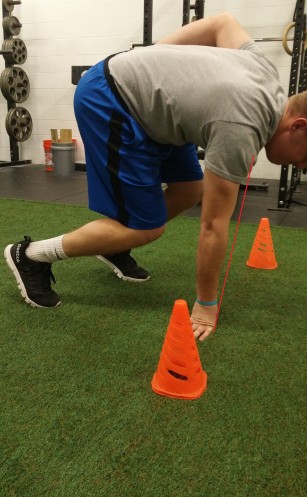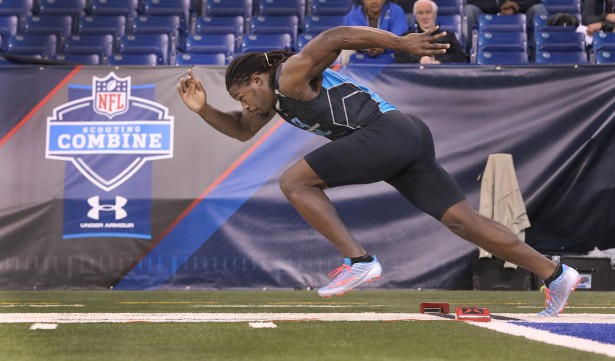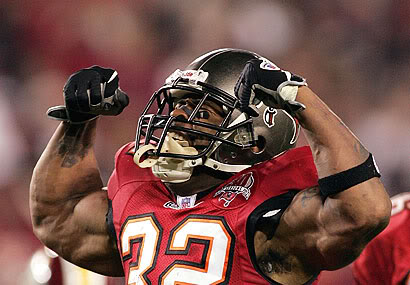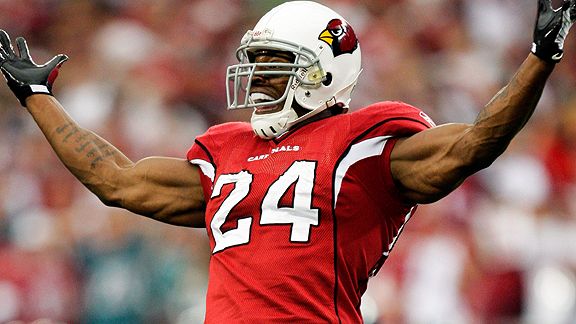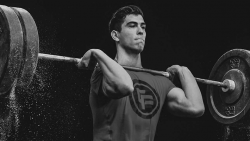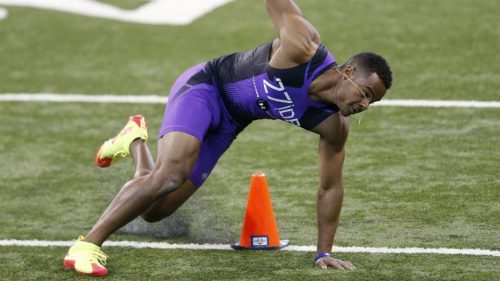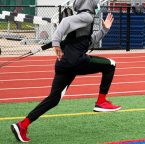If you ask any college or pro scout about what they look at first when evaluating an athlete they would say the 40-yard dash. The 40-yard dash is the granddaddy of all the drills for athletes.
The 40 is a pure measure of how quickly an athlete can explode off the line and reach top-end speed. Running a good 40-yard dash can be the difference from being a full-ride scholar to a walk on.
As a coach, we know the importance of not only teaching the right technique on how to run correctly but also how to use our strength and power to reach top-end speed as quickly as possible.
When we look at the 40-yard dash, it is measured from 10, 20, and 40 yards. While many people think that there are secrets to running a fast 40-yard dash I am here to explain what I believe and have researched to find to be the best way to run a fast 40-yard dash.
When I say we look at the 40-yard dash in the 3 segments there is a certain understanding of what each marker means. The first 10 yards measures acceleration from a standstill, at 20 yards, the measure of acceleration to top-end speed, and 40 yards measures how long top-end speed is maintained.
In order to get the best results for those 3 components of the 40-yard dash, we have to break down the whole dash into 3 key parts: The stance, the first ten yards, and the finish. Understanding and perfecting these 3 parts will help produce our fastest 40-yard dash.
Why The 40-Yard Dash Is Important
A speedy 40-yard dash time is crucial for athletes because it showcases not just raw speed, but also explosive power and acceleration.
These traits are invaluable in many sports, such as football, where short bursts of speed can make the difference between a touchdown and a tackle. Scouts and coaches take 40-yard dash times seriously; a strong performance can significantly boost an athlete’s draft prospects or scholarship opportunities.
So, in essence, nailing the 40-yard dash can set you apart from the pack and draw attention from those who matter in the sports world.
Three Tips to Run a Fast 40-Yard Dash
Follow these 3 tips and run a faster 40-yard dash
The Stance
When it comes to the stance it is the most overlooked part of the run. Having a great stance sets us up for success.
When setting up our stance we need to remember that we want to crowd the line. The only part of our body that has to be behind the line are our hands and feet.
As we set up we to figure out which foot will be forward and backward in our stance. Usually, a good rule of thumb is having the foot you jump off of in front.
Now we need to get our feet set appropriately (and this can vary slightly from athlete to athlete, so it is important to determine which stance is best for each individual athlete).
Set front foot roughly ½ to 1-foot length back from the line
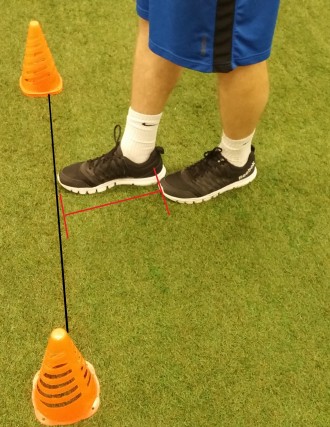
Set 2nd foot lined up with opposite foot’s heel. The athlete can also set foot up 1-foot length back from opposite foot’s heel (or somewhere in between those 2). Again this is dependent upon the athlete.
NOTE: keep both feet shoulder-width apart and weight on the balls of your feet.
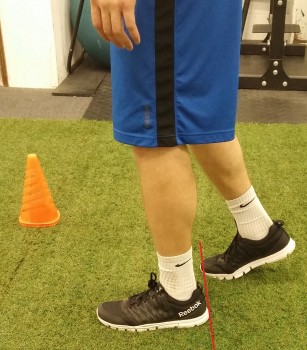
Once our feet are set we now look to set our arms/hands and set our shin angle. To do this, place hands in front of the line and “walk” yourself back behind the line. In doing so you want to raise your hips and load yourself like a spring.
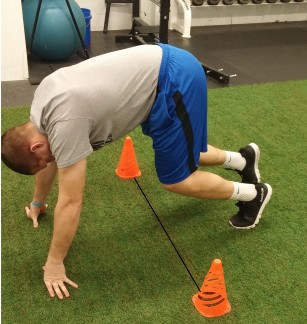
You want to ensure you have proper shin angles as you “walk” yourself back and keep them at the proper angle until takeoff (try to get shins as parallel to the ground as possible).
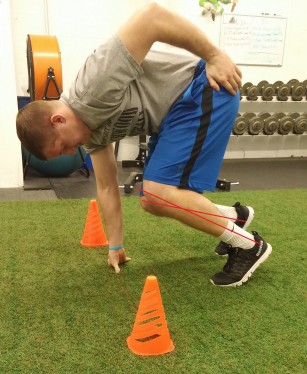
While “walking” yourself back, you want to place the hand of your back leg just behind the start line. You want your shoulder slightly in front of your hand and should feel a “forward lean”. We want to feel like we are almost falling forward (this is important at takeoff as it will ensure the athlete shoots forward instead of popping up).
Once our “3 point” stance is set up, we will raise our opposite arm up to our hip while maintaining a 90-degree angle at the elbow. We then brace our core and keep our chins tucked and prepare for take-off.
The First 10 Yards
As we begin to accelerate from a dead stop, we want to ensure we are pushing off with both legs. Again, the first 10 yards is acceleration and to accelerate as quickly as possible we need to use the power in our legs to drive our feet in the ground as strong as humanly possible.
We drive our arms as hard as humanly possible while keeping our chin down because we do not want to rise up. As we fire our arms back (think driving elbows back), we need to ensure we keep our elbows close to 90 degrees.
We want to cover as much ground as possible with our first step. Our first step should be about a yard beyond the line (if it is shorter than this, the athlete is not driving with their legs strong enough).
We need to continue to hold our breath and brace our core until the end of the 10 yards. As we run we need to ensure we have maximum knee drive and dorsiflexion in the ankle. The goal is to cover as much ground as possible with each step. A good time will typically have 5 1/2 to 6 ½ steps.
The Finish
As we come to the finish of the run we need to remember that there is no letdown. Keep driving the elbows to keep the speed (the legs follow the arms). When running this we want to run through the finish line or 10 yards past. We do not want to slow up or lose focus. Visualize the finish beyond the line. Many people let up right before the line which costs them a tenth of a second.
In conclusion, there is minimal error that can happen when running a 40-yard dash. When it comes to our stance, the first 10 yards, and the finish there is a realization that it’s the little things that make the biggest difference. Perfecting these three parts of the 40-yard dash will not only improve your time but your stock in a college or scouts eyes as well.
About the Author:
James Sheahan is a strength coach at Elite Sports Performance, a training facility located in Mentor, OH. James attended Heidelberg University where he played football for 4 years. He was a 3-year starter playing wide receiver and special teams. James graduated with a degree in psychology in behavior management. James trained with Elite throughout the course of his collegiate career where he picked up and learned much of Elite’s training philosophy first hand in the trenches. James’ love for training and helping individuals has brought him back to Elite where he continues his passion. James is a dedicated student to the game and is always striving to better himself as a strength coach. For more information on Elite Sports Performance visit: www.EliteSportsPerformanceGym.com


